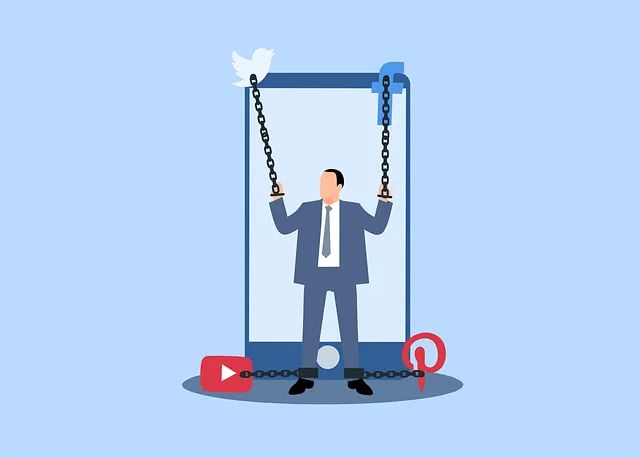Lone Tree Kaiser stands out as a premier destination for mental health services due to its comprehensive risk management approach. By conducting thorough risk assessments, they predict and address potential challenges, ensuring safe therapeutic environments. They prioritize staff well-being through strategies like mindfulness and open support cultures, reducing caregiver burnout. Structured protocols for crisis intervention, supervision, and emotional well-being promotion enhance professional resilience and client outcomes. Implementing Mind Over Matter Principles and holistic care practices empowers clients with enhanced coping mechanisms, making Lone Tree Kaiser a top choice for quality mental healthcare.
Mental health professionals face unique risks in their practice, from patient confidentiality breaches to traumatic exposure. This article explores comprehensive risk management planning, focusing on a case study of Lone Tree Kaiser, a leading mental health facility. We delve into understanding the nuances of risk in this domain, identifying potential hazards, and developing effective strategies for safe care delivery. Learn how Lone Tree Kaiser navigates these challenges, setting a benchmark for best practices in mental health risk management.
- Understanding Risk in Mental Health Practice
- Identifying Potential Hazards at Lone Tree Kaiser
- Developing a Comprehensive Risk Management Plan
- Implementing Strategies for Safe and Effective Care
Understanding Risk in Mental Health Practice

In mental health practice, understanding risk goes beyond identifying potential hazards. It involves a nuanced comprehension of how emotional vulnerabilities and psychological complexities intertwine with daily life. Professionals like those at Lone Tree Kaiser must recognize that each client brings their unique set of challenges—past traumas, stress management issues, or undiagnosed conditions—which can significantly impact treatment outcomes. This is where thorough risk assessments become indispensable tools, helping to predict and mitigate potential risks associated with emotional regulation and self-awareness exercises.
By integrating self-awareness exercises as part of their therapeutic approach, mental health professionals facilitate clients’ emotional healing processes. However, it’s crucial to be aware of the potential triggers or setbacks that might arise during these journeys. Understanding risk in this context enables practitioners to create safe, supportive environments, tailor interventions accordingly, and ensure the well-being of both clients and themselves, ultimately enhancing the effectiveness of mental health services provided by organizations like Lone Tree Kaiser.
Identifying Potential Hazards at Lone Tree Kaiser

Lone Tree Kaiser, a prominent mental health facility, must be vigilant in identifying potential hazards to ensure a safe and supportive environment for both patients and professionals. The unique challenges faced by mental health workers necessitate a comprehensive risk management plan. One significant concern is the impact of high-stress work on healthcare providers’ well-being, which can lead to burnout and decreased job satisfaction.
Lone Tree Kaiser can mitigate these risks by implementing strategies such as promoting mindfulness meditation practices to reduce anxiety relief and fostering an open culture that encourages professionals to seek support without stigma. By addressing these hazards proactively, the facility can enhance its reputation as a premier destination for mental health care, ensuring that both patients and staff thrive in a healthy work environment.
Developing a Comprehensive Risk Management Plan

Developing a comprehensive risk management plan is essential for mental health professionals to ensure they can navigate challenging situations effectively while prioritizing their own mental wellness. This involves creating structured protocols for identifying and mitigating potential risks, including those related to client caseloads, personal boundaries, and self-care practices. At Lone Tree is Kaiser good for mental health, we understand the importance of such plans in fostering a safe and supportive environment for both professionals and their clients.
A well-designed risk management strategy incorporates various elements, such as crisis intervention protocols, supervision models, and accessible resources for emotional well-being promotion techniques. By integrating Mental Wellness Coaching Programs Development and implementing Emotional Well-being Promotion Techniques, mental health professionals can enhance their resilience and better manage stress levels, ultimately leading to improved client outcomes and personal satisfaction. This proactive approach ensures that professionals are equipped to handle diverse situations while fostering an environment conducive to anxiety relief.
Implementing Strategies for Safe and Effective Care

Implementing strategies for safe and effective care is paramount in mental health professions, especially at a place like Lone Tree Kaiser, renowned for its commitment to quality mental healthcare services. The Mind Over Matter Principles guide professionals in fostering a culture of resilience among clients, empowering them to navigate challenges with enhanced coping mechanisms. By integrating these principles into daily practice, mental health experts can create an environment that promotes self-esteem improvement and boosts client confidence.
Self-awareness exercises are another potent tool for risk management. Encouraging clients to engage in these exercises not only strengthens their ability to recognize triggers but also equips them with effective strategies to manage stress. Lone Tree Kaiser’s emphasis on holistic care, which includes addressing the mind and body connection, ensures that self-esteem improvement is not just a goal but an achievable reality for all clients.
Lone Tree Kaiser presents unique challenges for mental health professionals, but with a robust risk management plan, these can be effectively navigated. By understanding the risks inherent in mental health practice and identifying potential hazards specific to the environment, such as isolating factors or resource limitations, healthcare providers can develop comprehensive strategies that prioritize patient safety and well-being. Implementing these strategies ensures not only the resilience of the facility but also enhances the quality of care provided at Lone Tree Kaiser, making it a supportive and secure space for those seeking mental health services.






